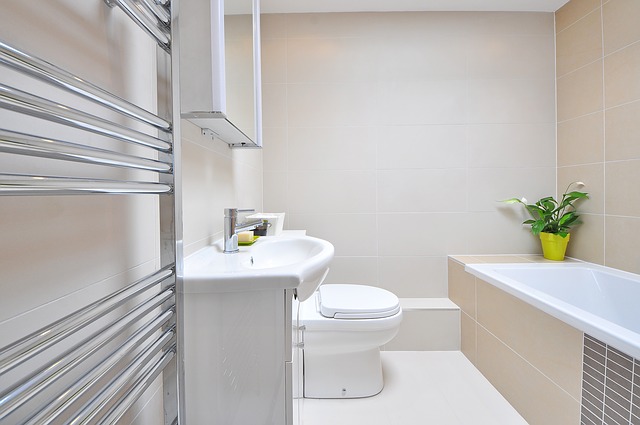Sanitaryware
The term ‘sanitaryware’ or ‘sanitary ware’ is a slightly ambiguous one that in very general terms refers to sanitary appliances found in installations, such as toilets and bathrooms.
In its narrowest sense, it can be taken to refer to WC bowls, cisterns, bidets, urinals, and washbasins (and sometimes sewerage pipes), that have traditionally been manufactured from porcelain (a ceramic material made from clay that might be described as 'vitreous china' when coated with enamel). This might be referred to as ceramic, porcelain or china sanitary ware, and is often white.
However, sanitary appliances are now made from a wide range of materials, including metals, acrylics, glass, and so on, and ‘sanitaryware’ is sometimes now interpreted to include a wider range of appliances that might be found in sanitary installations such as baths, showers, bins, incinerators, macerators, and so on.
NB: The Building Regulations Approved Document G: Sanitation, hot water safety and water efficiency suggests that the term ‘sanitary appliance’ means a ‘… WC, urinal, bath, shower, washbasin, sink, bidet and drinking fountain. It also includes appliances that are not connected to a water supply (e.g. composting toilet) or drain (e.g. waterless urinal).’
[edit] Related articles on Designing Buildings
- Approved Document G.
- Approved Document H.
- Bath.
- Bathroom definition.
- Bidet.
- Comparing porcelain and ceramic tiles.
- Drinking fountain.
- Earth closet.
- ECA Water Scheme.
- Installed level access shower.
- Lavatorium.
- Lavatory.
- Passive water efficiency measures.
- Porcelain.
- Secondary ventilation stacks in tall buildings.
- Septic tank.
- Sanitary accommodation.
- Sanitary pipework.
- Shower.
- Sink.
- Splashback.
- Solid surface wash troughs.
- Tiles.
- Types of sanitary appliances.
- Urinal.
- Wall hung toilet.
- Water closet.
- Wet room.
Featured articles and news
Infrastructure that connect the physical and digital domains.
Harnessing robotics and AI in challenging environments
The key to nuclear decommissioning and fusion engineering.
BSRIA announces Lisa Ashworth as new CEO
Tasked with furthering BSRIA’s impressive growth ambitions.
Public buildings get half a million energy efficiency boost
£557 million to switch to cleaner heating and save on energy.
CIOB launches pre-election manifesto
Outlining potential future policies for the next government.
Grenfell Tower Inquiry announcement
Phase 2 hearings come to a close and the final report due in September.
Progress from Parts L, F and O: A whitepaper, one year on.
A replicated study to understand the opinion of practitioners.
ECA announces new president 2024
Electrical engineer and business leader Stuart Smith.
A distinct type of countryside that should be celebrated.
Should Part O be extended to existing buildings?
EAC brands heatwave adaptation a missed opportunity.
Definition of Statutory in workplace and facilities management
Established by IWFM, BESA, CIBSE and BSRIA.
Tackling the transition from traditional heating systems
59% lack the necessary information and confidence to switch.
The general election and the construction industry
As PM, Rishi Sunak announces July 4 date for an election.
Eco apprenticeships continue help grow green workforce
A year after being recognised at the King's coronation.
Permitted development rights for agricultural buildings
The changes coming into effect as of May 21, 2024.






















